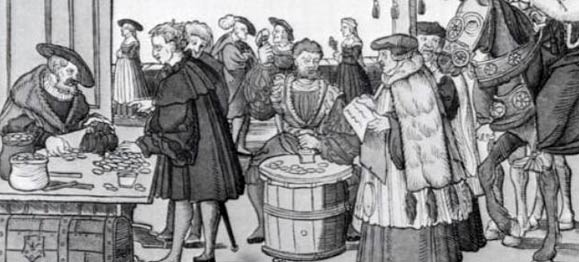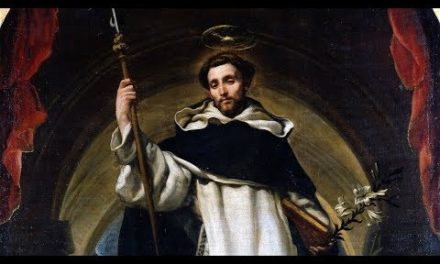This 74th Episode of CS is the 2nd Overview, where we pause to sum up the journey we’ve taken since the last overview in Episode 35.
That summary began with the Apostolic Church and ran up through the 5th C marking the Fall of the Western Roman Empire. This Overview starts where that left off and brings us up to the 15th C. We’re about to move into what’s called the Reformation and Counter- Reformation Era, but have a bit more work to do in looking at some trends that took place in the Church in Europe in the waning decades of the Middle Ages.
Turns out, there was a lot of reform-oriented activity that took place in the Church well before the birth of Martin Luther. So we’ll take a look at that, filling in some of the holes left in the story so far.
The reason these overview / review episodes are important is because of the need to set the events of Church history into the larger context of world history. But a danger lies in the very thing many dislike in the study of history; that inevitable list of names and dates. We have an advantage here because the assumption is – you LIKE history > Or for goodness sake, why would you be listening? I sure hope no home-school student has to listen to these, and no parent uses them as a form of discipline. Although, I guess they could be used in some kind of enhanced interrogation technique.
Anyway à Here we go . . . Picking up where we left off in the last Overview à
Christianity came to England early, at the end of the 3rd C. Patrick took the Gospel to Ireland in the 5th.
The Goth and Hun invasions of Europe altered both the political and religious landscape. As the political structures of the Western Roman Empire fragmented, people looked to the Church to provide leadership. Being generally pretty capable leaders, the task of providing guidance fell to the dozens of Christian bishops.
Then we briefly examined a subject that could have occupied us for much longer; the emergence of the Roman bishop as the Pope and de-facto leader of the Church.
We spent an episode considering Pope Gregory the Great’s monumental impact on the Church in the 6th C, how the Church proved to be a crucial feature of the Middles Ages and how Augustine’s work on theology formed the intellectual core of that era.
We charted the Faith’s expansion into Africa, Mesopotamia, Asia and the Far East.
Charlemagne’s tenure as Holy Roman Emperor was reviewed. The Iconoclast Controversy in the Eastern Church was covered. Then we saw the rift between the Eastern and Western churches that occurred in the 11th C.
The Crusades occupied us for 4 episodes; the growth of monasticism for 5 as we took a closer look at both Francis of Assisi and Dominic. We were fascinated by the career of the brilliant Bernard of Clairvaux. We attempted an examination of two major controversies –Investiture and the Eucharist.
Universities were founded; the two most important at Paris and Oxford, but several lesser schools as well – giving rise to the movement known as Scholasticism which we took 3 episodes to cover. Scholasticism was fueled by the earlier work of Anselm and Abelard, but really took off with the labor of Thomas Aquinas and Dun Scotus.
Thomas Beckett was made the Archbishop of Canterbury, then killed by over-zealous knights.
In the mid-late 12th C, Peter Waldo started a movement of mendicants that would birth a movement that lasts to this day. We haven’t said much about that yet but will in a near episode.
The Third Lateran Council met in 1179 and a Middle Eastern Church known as the Maronites made common cause with the Roman Catholic Church rather than the Eastern Orthodox.
In 1187, Saladin captured Jerusalem and the 3rd Crusade set out.
Innocent III became the most powerful Pope of the Middle Ages and convened the monumental Fourth Lateran Council in 1215.
A Crusade was launched against the Cathars in Southern France.
King John issued the Magna Carta.
Pope Gregory IX appointed the first Inquisitors, another episode of church history we need to devote an episode to.
Coming up to recent episodes, we looked at the emerging tension between the Church and State, Popes and Princes, that was a harbinger of Europe’s emergence into the Modern world. Pope Boniface VIII’s papal edict Unam Sanctum in 1302 was the proverbial gauntlet hurled at the foot of the secular power, denying salvation to anyone outside the Church.
We reviewed the Great Papal Schism when there was—count them; not 1, nor 2, but for a time, 3 popes!
In 1312, the Knights Templar were suppressed.
Nine years later the Italian poet Dante Alighieri wrote The Divine Comedy.
1337, the Hundred Year’s War began and a decade later the Plague killed off a third of Europe.
Then, as we start to move inexorably toward the emergence of serious reform attempts, we saw the central place of Sacramentalism in the mindset of people in the Middle Ages – that salvation is free and by grace, but that it’s dispensed THROUGH the Church, BY the clergy performing the sacraments.
One episode looked at the Mystics who managed to keep the focus on God while it seemed so much of the rest of the clergy had been consumed by the intrigues of European politics.
We paused to see what was happening with the Mongols and their rapacious conquest of the East, and ended with a look at John Wycliffe, Morningstar of the Reformation.
It’s important we understand, the reform of the Church was not something that began with Martin Luther in the 16th C. Far from it. There’d been many reform movements and the century and half before Luther went far to prepare the ground for his emergence.
Jesus spoke of the problem of wineskins. New wine needs a new skin. If you put new juice in an old skin, as it ferments, the already stretched bottle will burst, ruining both skin and wine. Noà Jesus wasn’t giving wine-making lessons. He illustrated a spiritual axiom. When God does a new thing, He often goes outside the current religious “skin”, the existing structure, and uses a new vessel, medium, or method.
From one perspective, we could say that Church History is a long tale of fresh movements of the Spirit, and how the Faith has embodied, or given expression to those new movements.
The challenge of the modern student of history is to avoid layering back onto history our own particular experience and evaluation. People with smartphones and the Internet with a vast searchable electronic encyclopedia, literally at their fingertips, could easily consider people just a hundred years ago to be terribly uninformed; and people 500 years ago to be bereft of knowing much of anything. It’s said by some that the brilliant polymath Thomas Young, who died in 1829, was the last man to know everything. What that means is that until the early 19th C, the body of information available in the form of books, the repositories of knowledge in that time, was of such a volume that a single human being could potentially have at least a working knowledge of ALL of it. But after that, the proliferation of knowledge began to grow exponentially so that it became impossible for one person to have such knowledge.
We don’t need to attempt such a knowledge upload today when we can download any piece of knowledge we need in an instant.
I say all that as a preface for this: As we soon move in our podcasts into the Reformation Era and the breakaway of the Protestants, it’s easy for us who’ve lived so long with the tension between Roman Catholics and Protestants, to project that paradigm back onto the Church before the Reformation. That would be wrong, a gross distortion of the facts.
Before the Reformation, there really was just one church in Europe – and we ought not call it the “Roman Catholic Church” because what we think of TODAY as the RC Church was not that! The Roman Catholic Church today is what it is, in good measure, BECAUSE of the Reformation, as we’ll see. Western Christians today probably ought to understand the Church of Europe before the Reformation as “our church” – regardless what your denominational stripe is now. Eastern Christians, of course, look to the Eastern or Greek Orthodox Church as their Church and have for a thousand years.
The point is, the numerous attempts at reform prior to the Reformation were all kept in-house. Most of the monastic movements were attempts at reforming, not just monasteries, but the entire Church. Some of the popes had a reform agenda and were able to accomplish somewhat in the way of getting the Church back to its Apostolic ideal. The Reformation split the Church precisely because of a perfect storm of several factors that combined in Europe when it was obvious to just about everyone there was something seriously wrong in the leadership of the Church. And when the Church wouldn’t install the reforms it so obviously needed, a door had opened to allow those who wanted out, to leave.
The factors that contributed to that perfect storm were . . .
First, the growing tension between Popes and Princes.
As the Investiture Controversy made clear, there’d been strife between secular rulers and the Pope for a while. It all went back to Charlemagne and his descendants who ruled by having their crowns bestowed by the Pope; their rule sanctioned by the Church. But as the different rulers of Europe jostled each other for territory and wealth became more important to fielding ever larger armies, these rulers competed with the Church for income. As the borders of Europe became thicker, the tension between Church and State grew.
Second, the emergence of the European middle-class meant the feudalism that dominated European politics and economics began to loosen its grip on society. Though the social structure was still tightly controlled, new options began to appear. The emerging middle-class possessed more disposable income, fueling more markets and options. Cities began to grow. More were educated. Questions were asked, and the Church didn’t always have satisfying answers.
Third, the printing press arrived and books began to proliferate. Ideas that had taken months to move from one place to another were now making the trip in days.
Fourth, the scandal of the Papal Schism, with the governance of the Church being argued over by three claimant-popes all at the same time was simply embarrassing to many of Europe’s faithful. It was clear to everyone, including the Pope’s themselves, that serious changes was needed. This Church, divided as it was, could NOT be what Jesus and the Apostles had in mind.
So, in the next episodes, we’ll take a look at some of the attempts at reform that occurred in the Late Middle Ages that act as precursors, foreshocks, if you will, to the eventual rift brought by the Protestants.






I had to laugh when you mentioned hoping that homeschoolers weren’t being forced to listen. I had juuuuuust told my son that I would be having him listen to this next year for part of his senior load. Of course, he LOVES history and plans to major in biblical studies, it won’t be a burden at all. 😉
As for me, I’m thoroughly enjoying this as a follow-up to having read The History of the Church in Plan Language a couple of years ago. I binge listen every night while the rest of the house sleeps. Thanks for giving this insomniac mom something beneficial to hear. 🙂
Melanie, That’s hilarious! Love stories like this.
Lance